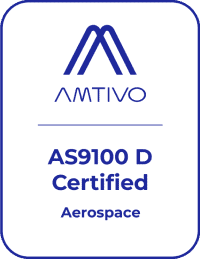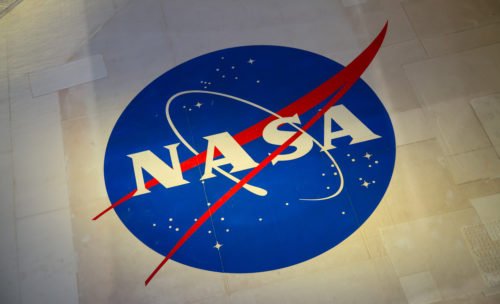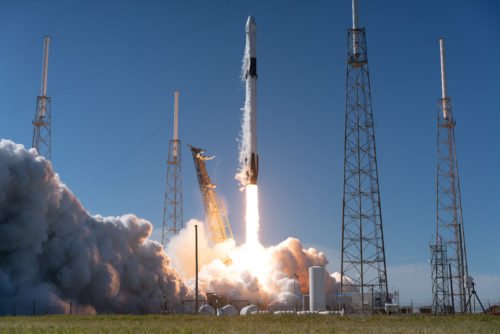The Commercial Space Economy Forecasts an Optimistic Future
Leave a CommentWith the recent manned mission of a US-made rocket, and advancements in reusable launch systems, commercial space is coming into the spotlight and showing an optimistic future.
The commercial space economy has been steadily growing in recent years for reasons ranging from financials to innovative breakthroughs in technology. Although the manned-mission is in the spotlight, in terms of segmentation of various commercial space activities, unmanned operation is forecasted to contribute a larger share of activity.
North America still leads the overall launch capability and is said to have the largest market share in the spacecraft industry. NASA’s renewed resolve in returning to the moon, and extending the reach of the manned mission to Mars, comes with a significant budget to accelerate the development of space technologies and the economy. Anticipating the future of space commerce, many entrepreneurs and pioneering companies are entering the new space race to find unique ways to provide the necessary services for this emerging industry – including the following:
Affordable Launch / Rocket technologies: Curbing the cost of launch is the foundation of making space accessible for commercial companies.
Satellite Internet / Communication: Most likely the development and deployment of communication technology is the most immediate opportunity for space businesses. Companies focused on improving the accessibility and the reach of wireless broadband and connectivity through satellites.
Asteroid / Moon Mining & Manufacturing in Space: The idea sounds like a science fiction story, but companies are exploring ways to extract water and rare minerals from asteroids, and the moon. Some of these companies are also involved in developing the manufacturing technologies required to build structures in orbit and on other planets.
Refueling Services: Gas stations in orbit? The capability to fuel/refuel spacecraft destined for long range target (Mars), as well as the satellites that are already in the earth’s orbit, is an essential part of space commerce and rapidly becoming a reality.
Cleaning up Space Debris: With all of the satellites and manmade machinery that we have launched and left in space, the Earth’s orbit is becoming cluttered – We need companies that can track and remove this “space junk” to avoid accidents and keep space accessible.
Space Tourism: Perhaps what most earth citizens are looking forward to the most is the ability to take a brief trip to space. Though ticket prices for space tourism are still astronomically expensive, these companies are developing ways to make it affordable and bring the space adventure to many of us.
Space Exploration / Colonization: This is probably the most popular and audacious goal amongst the leading space ventures. These companies are working on sending and settling humans and cargo beyond earth’s orbit, including the moon and mars in the near future.
Technology Advancements Driving an Optimistic Future
Space entrepreneurs are exploring and pursuing ambitious goals such as colonizing other planets, mining asteroids, setting up space tourism, building manufacturing plants in orbit, as well as pursuing ways to further lower the cost of access to space – such as airplane-borne rocket and air-to-space launchers. It is clear that reusable rockets and space-age commercialization are today’s reality. Lower per-launch costs and miniaturization of payloads/satellites are opening new doors for non-aerospace and defense sectors, further demonstrating that commercial space is showing an optimistic future.
With reusable rocket technology advancements, the cost of launching a rocket has declined drastically to 33% of previous costs (from $200 million to $60 million). Morgan Stanley, a leading business analysis firm, predicts a potential launch cost of $5 million, in the near future. The global space industry is expected to generate $1.1 trillion in revenue by 2040, up from $350 billion in 2019.
How Test Devices Contributes to the Commercial Space Economy?
We are the leading experts in high-speed rotor testing, manufacturing, and rotor balancing technologies, especially for aerospace applications. For decades Test Devices by Schenck, has been a dependable partner to many of the leading aerospace propulsion OMEs. Our capability in executing aerospace-grade engineering tests and managing outsourced manufacturing operations is only matched by our passion for sharing our customers’ success.
There are several operationally critical high-speed rotating parts in each rocket engine. We both test and perform important operations in the overall component manufacturing processes. Test Devices currently performs production spin testing to satisfy NASA standard 5019 section 7.2.7 fracture critical rotating hardware. Typical items that are associated with fracture critical rotation are turbine, Fuel pumps, and LOX impellers.
Partnering with us not only provides you with the benefits of our extensive experience and dedicated team, but you will also be working with a team that keeps quality, safety, and continuous improvement at the forefront of our business. Customers want to work with Test Devices because of our focused approach on the most demanding manufacturing requirements, whether it be spin testing, semi-finish machining, or other critical processes.
For more information or to get in touch, please contact us today.




